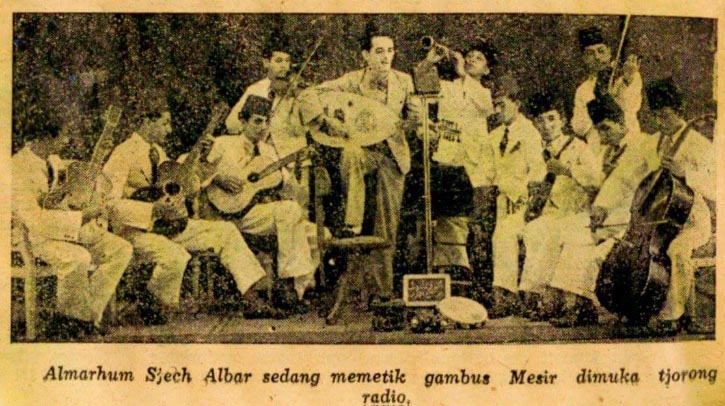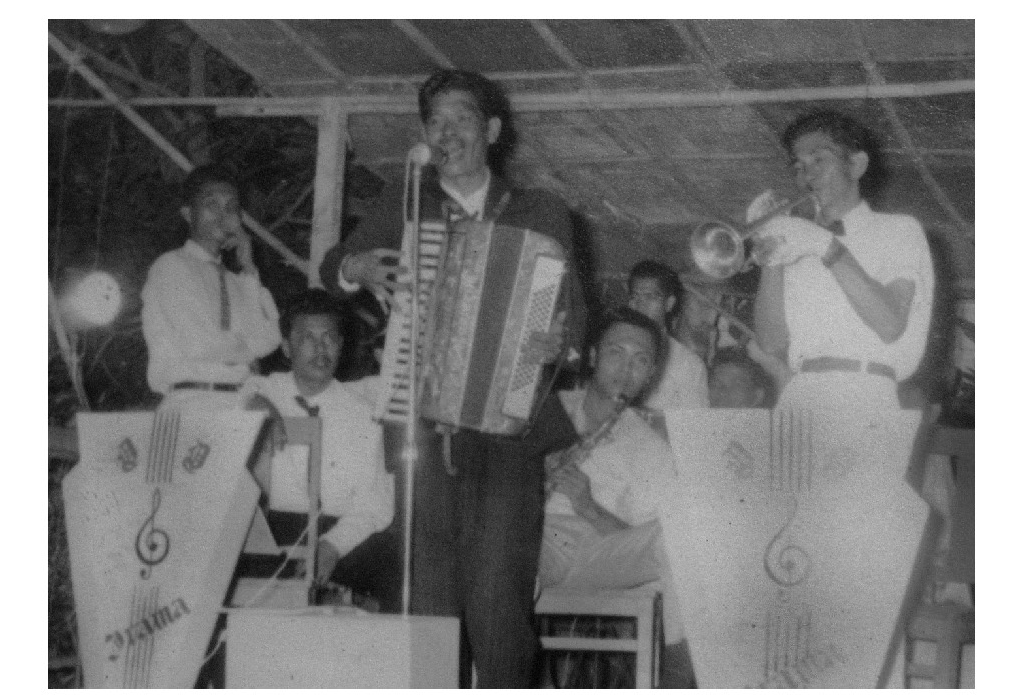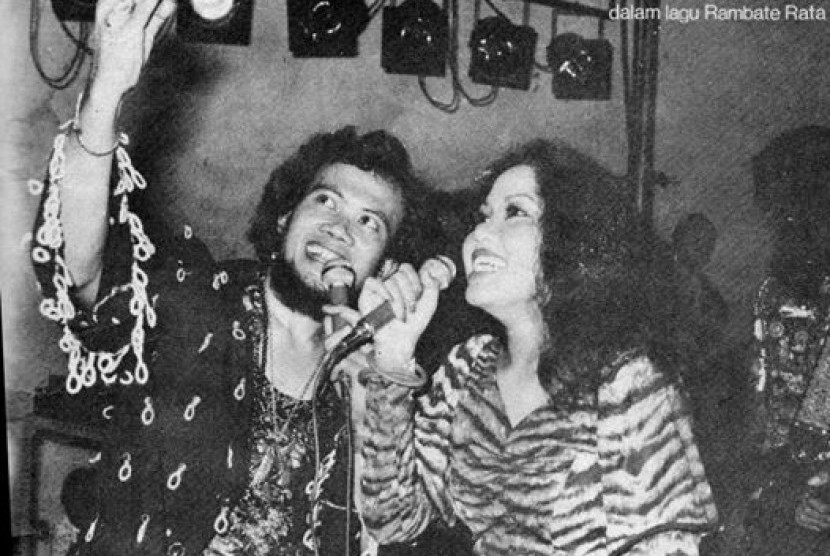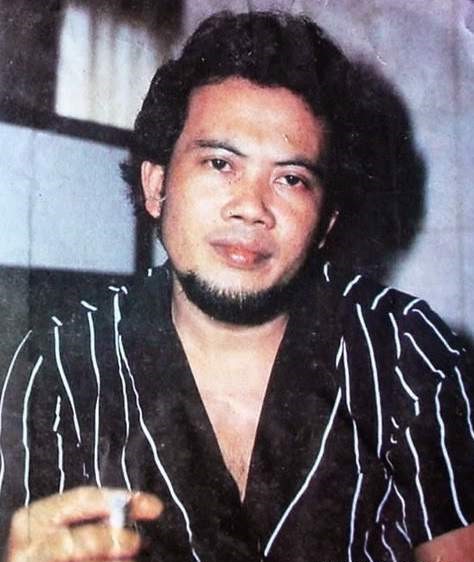
Dangdut is a popular music genre, massively reaching all kinds of people from different backgrounds. The musical evolution of dangdut can be traced way back before even the term itself became well known. As a hybrid genre of music, formed as an amalgamation of various cultures, dangdut has gone through different phases that helped shaped it to become the music that we’ve come to know now.
Many musical vernaculars emerging from the non-aristocrat society, the commoners, such as gambang kromong, langgam, kroncong, orkes harmonium, orkes gambus or orkes melayu, were widely performed, recorded, traded and broadcasted because they had become a high commodity for record companies in Indonesia. Because it was so popular, Indonesia’s local music managed to become the groundwork for many musicians in Indonesia to innovate while adapting various form of music – thus creating the origins of dangdut.




Once popular in the 1930s, both orkes harmonium and orkes gambus were the antecedent of dangdut. Using instruments such as harmonium (an organ-like musical instrument), violin, trumpet, bongo, and tambourine, orkes harmonium usually performed a musical repertoire that is a blend of Malay, Arabic, Indian and European tunes. After Indonesia declared its independence people abandon the term orkes harmonium and referred to such music as orkes Melayu.
(Song references: S.M. Alaydroes, Ebrahim Masrie, Syech Albar)

During post-independence era, orkes Melayu took over the role as Indonesia’s national music because the music was considered able to represent a modern Indonesia. Orkes Melayu was a hint that new creativity was spreading in the sphere of Indonesia’s popular music. To further develop the music that they were performing orkes Melayu’s musicians started to incorporate elements from India’s cinematic scores, which were popular in the 1950s, cementing the foundation of dangdut.
(Song references: Husein Bawafie, Said Effendi, Umar Fauzi Azran, A. Chalik)


The Old Order administration barred the stream of popular culture originating form the Western world, including any activities associated with it, but were still allowing cultural flow from India and the Middle East. The increasing popularity of orkes Melayu upheld the roots of dangdut. This allowed names like Munif Bahasuan, Ellya Khadam, A. Rafiq to emerge as the pioneers of dangdut.

Munif Bahasuan started his musical career when he joined Orkes Gambul Al Wardah. Later on, in 1955, he left the group to join Orkes Melayu Sinar Medan. After releasing his first record with Orkes Melayu Sinar Medan in 1957, Bahasuan formed his own group with Ellya Khadam, M. Mashadi, M. Lutfi, and Juhana Sattar. Munif Bahasuan brought in a strong cosmpolitan touch in every song he composed and sing. Musical elements from Indian film score and Middle Eastern music, combined with upbeat tempo and words of despair dan loss, became his signature style. Bahasuan’s creativity in writing music inspired many orkes Melayu musicians in Indonesia, birthing other dangdut pioneers.
(Musical references: “Patah Kasih”, “Bunga NIrwana”)


Nicknamed ‘Indian Doll’, this songstress was the first generation of stars that pioneered dangdut. When she was younger, Ellya Khadam used to sing Malay and Arabic music. She was also fluent in Qur’an recitation. Ellya Khadam begin to sing Indian music when she first joined Orkes Melayu Sinar Kemala, which was assembled by A. Kadir, in Surabaya. It was then that Ellya Kadam introduced her Indian persona by wearing Indian traditional clothing while also adapting the dance moves, vocals and facial expressions of Indian actresses. It was this persona that brought Ellya Khadam, along with a few orkes group, to Singapura and Malaysia.
(Musical references: “Termenung”, “Kau Pergi Tanpa Pesan”, “Pengertian”, “Janji”, “Mengharap”, “Boneka dari India”)

.jpg)
Achmad Rafiq, better known as A. Rafiq, started his career as a singer with Orkes Melayu Sinar Kemala in Surabaya. It was in 1969 that he decided to move to Jakarta where he became one of the dangdut’s first generation trailblazers who often graced the Indonesian radios, cinema and television screens. A. Rafiq was the pioneer of dangdut who would incorporate elements of dramatic visuals to each of his shows. Combining the moves and visuals form Indian cinema, Chinese martial arts, Malay zapin dance moves, and American rock ‘n roll, A. Rafiq created a distinct style of dangdut that inspired the performance of many of dangdut stars today.
(Song references: “Pandangan Pertama”, “Pengalaman Pertama”)


The term dangdut surfaced in Indonesia’s popular music scene in the 1970s, and it was slowly replacing orkes Melayu. The shift in political and socioeconomic climate during the era of the New Order meant that popular music from the Western world is starting to shaped the form of dangdut – whereas before it was very attached to Malayan tunes. Pop and rock became one of the main inspirations for dangdut musicians of that time so that they can formulate dangdut to be more diverse and appealing to the masses. This phenomenon brought forth names like Rhoma Irama, Elvy Sukaesih, Mansyur S., and Camelia Malik as the musician who would hold important roles in deciding the next step of dangdut.
In 1969 Rhoma Irama started his musical career. In the beginning he was a singer for Orkes Melayur Purnama. His experience with orkes Melayu, and a desire to gain a wider audience, motivated Rhoma Irama to create a new musical style. Together with Orkes Melayu Soneta, which he had established, he was determined to become popular – crossing all social class, modernized – to convey certain messages. His effort wasn’t futile. Soneta went to become the most successful group in Indonesia. Rhoma Irama’s musical formula was a concoction of Indian, Arabic, Malayan Deli tunes, with a special touch of guitar rock melody a la Deep Purple’s Ritchie Blackmore. He also embedded lyrics loaded with moral and social messages that were relatable to the daily lives of Indonesian people and were still memorable to this day.
(Musical references: “Begadang”, “Terajana”, “Mirasantika”, “Kehilangan”)



Since starting her career as a dangdut musician, Elvy Sukaesih took into her own hand the creation of her singing style, blending Indian tunes, Western pop and Indonesian traditional music. Elvy Sukaesih’s performances were synonymous with moves a la Indian cinema, complemented with movement of the shoulders that were in tune with rhythms from the drums and flashy costumes – all of this would then become dangdut’s characteristics. Her ability to produce hits after hits in the ‘70s and ‘80s made her crowned as the ‘Queen of Dangdut’, coupled with Rhoma Irama as the ‘King of Dangdut’. The title was well deserved as Elvy Sukaesih was not only successful in Indonesia, but also globally – she was the one who introduced dangdut to the world. In 1992 she went on to release a few records in Japan and graced the stages and national television there.
(Musical references: “Kejam”, “Mandi Madu”, “Jangan Kau Pergi”)
As it was with Elvy Sukaesih, Mansyur S. took his inspirations from the singing style of Indian actors he saw on the screen and pop stars from the Western world. Mansyur S. got his break in the dangdut scene when he released the hit single “Khana” in 1978. Through that single Mansyur S. introduced a particular rhythm and melody that he referred to as ‘Dangdut Manis’ (Sweet Dangdut). His singing style and the instrumentation pattern of his backing band Radesa, inspired many male dangdut songwriters and singers after him, such as Meggy Z., Imam S. Arifin and Caca Handika.
(Musical reference: “Khana”, “Zubaedah”, “Air Mata”)

Camelia Malik jumped into the dangdut scene when she and husband Reynold Panggabean formed the group Tarantula in the mid-‘70s. Unlike other dangdut songstress, who took influences from Indian music, Camelia Malik instead introduce a singing style rich with Indonesian pop characterization. Not only that, Camelia Malik was also known as the singer who always brought out fresh approach in every performance, combining movements and elements of jaipong dance, modern dance, and Ballet. Her success made it acceptable for people to fuse dangdut with traditional elements from Indonesian music and dances. More and more female singers with style inspired by Camelia Malik were popping out – opening a larger possibility for the development of dangdut.
(Musical reference: "Colak-Colek", "Cubit-Cubitan"
The proximity of dangdut with Middle Eastern music made it possible to become a medium of musical expression that is attached to Islamic elements. Not only that, in 1973, Rhoma Irama declared that Soneta Group as the ‘voice of Muslim’ with their main intention – other than to entertain – to become a medium of information, education, unification and da’wah. The impact of dangdut’s proximity with Middle Eastern music, and the growing popularity of Rhoma Irama with his da’wah music, was the emergence of modern qasida groups that adapted the formula of dangdut.
Kasidah is the local version of qasida, a type of poetry recitation accompanied by music that emerge from the Arabic peninsula. A few changes happened to qasida after it arrived in Indonesia. One of those changes was the name qasida – it was absorbed to Bahasa Indonesia and changed to kasidah. Nasida Ria was the most popular kasidah group among many others. Adding elements of dangdut to their songs, Nasida Ria followed the footsteps of Rhoma Irama and his Soneta Group in using dangdut as a medium for da’wah. Nasida Ria’s music is rich with Arabic influences such as qasidah, but they also incorporate modern and electronic instrumentations, like organ, tambourine, tom-tom, mandolin, electric guitar, electric bass and flute. The success of Nasida Ria was followed by other qasida groups, like El Hawam El Wafda and Zuhriyah Nada.
(Musical references: Nasida Ria – “Perdamaian”, Zuhriyah Nada – “Remaja Mesjid”, El Hawa – “Cahaya Kehidupan”)


One genre that put a great influence in dangdut during the 1990s was electronic music. Electronic music was named so because technically it was made and played using electronic instruments – eliminating the use of conventional analogue orchestration such as guitar, bass or drums. Along with the increasing popularity of electronic music and dangdut – which reached its peak in the ‘90s when it was championed as the national music – new varieties of dangdut were also starting to emerge – among them were the influential disco dangdut and Funkot.

In the early ‘90s the use of sampling technique – with the help of electronic music instruments – in creating or arranging music was starting to be more common. Indonesian music writers and producers were also starting to use this technique. In disco dangdut arrangements the sound of electronic instruments were usually combined with recordings of conventional instruments such as bongo drums, tambourine and bass. This arrangement process would then alter the style and rhythm of the song, making the sound a combination of electronic disco and dangdut’s distinctive beats. One of disco dangdut’s signature styles is the insertion of a sample recording of a man speaking a particular word, for example the voice of James Brown repeating the words “clap your hands” or “get funky”. Disco dangdut dominated one-third of dangdut albums that were sold between 1997 and 2000. Disco dangdut’s signature arrangement would then become the blueprint for other forms of dangdut that were full of electronic sounds like the performance of single organ dangdut.
Video:
Funkot, short for Funky Kota (Funky City), is a term used to describe a musical form that can be said as the localized version of house music that was popular in the ‘90s. This genre was named Funkot because it emerged from from clubs in the Kota Tua (Old Town) area, such as Glodok, Harmoni or Mangga Besar. Funkot is also known as ‘house kota’ (city house), ‘timplung’ or ‘tung-tung’. It all started from the habits of DJs and music producers in playing, arranging, or remixing popular songs with various musical styles, from house to disco to electro funk. This combination, with the added ‘tung-tung’ sound from the synthesizer (to replace drums) and dangdut styled vocals, became the signifying sound of Funkot. Upbeat and energetic tempo, along with the distinct elements of dangdut in Funkot songs made it accessible to the people’s ears.
Song references: Melinda – “Cape Deh”, Cita Citata – “Goyang Dumang”
Video:
Media deregulation and the decentralization of cultural stream that happened after Reformation took place surely had an impact in the increase of awareness on regional cultural identities and activities – which also affect the dangdut scene. Both musicians and listeners of dangdut from outside of Jakarta became more aware of their own regional identity and culture that it affected the repertoire of their performance and craft. This phenomenon birthed a new breed of dangdut, where people fused dangdut melodies with elements of a region’s traditional music, that were specifically marketed for people from that region. Such music is tarling dangdut, koplo dangdut and Minang dangdut.

Tarling thrives in West Java, especially in Indramayu and Cirebon. The name tarling itself is an amalgamation of guitar and suling (flute). During its peak popularity in the ‘70s and ‘80s, dangdut started to evolve and assimilated with traditional music from West Java, resulting in the creation of a new sub-genre called tarling dangdut. One of the pioneers of tarling dangdut was Udin Zean with his group Kamajaya. Kamajaya’s success in performing tarling dangdut was soon followed by other groups such as Cahaya Muda, Nada Bhayangkara, Chandra Lelana dan Nengsih Group. As tarling dangdut gained a following, it branched out to other areas outside of West Java, from Banten to Banyuwangi. In later days, when single organ shows were getting well known, many tarling dangdut groups started popping out in Karawang, Subang, Indramayu, Cirebon, Majalengka and Kuningan.
Song references: Suzy Arzetty – “Keloas”
Video:
Koplo dangdut first emerge from Eastern Java as a variation of dangdut that was mixed with drum patterns from the traditional arts of Reog, Jaranan and Jaipong. It is unclear where the term koplo originated from, but in short it refers to drum patterns that was a result of interpretations and creativity from Eastern Javanes musician in playing and expanding the music of dangdut. Starting with the rise of Inul Daratista in early 2000s, koplo dangdut continued to show significant growth over the years, as proven by the increasing number of koplo dangdut groups and singers – among them were Trio Macan, Palapa, Monata, Sera, Ratna Antika, Via Vallen and Nella Kharisma. Koplo dangdut would typically showcase lyrics in Bahasa Indonesia, Javanese and a mix of both.
Song reference: Ratna Antika – “Anoman Obong”
Video:
Minang dangdut is variation of Minang pop that has been popular since the ‘60s. The increasing popularity of dangdut and the awareness of regional cultural identity in the years following the reformation became an encouragement for musician from Minangkabau (a term for the region of West Sumatra) to adapt elements from dangdut and incorporating them into the songs they were producing. Dangdut musical arrangement were combined with the sounds of traditional instruments from Minangkabau, such as Saluang (a type of flute), Bansi (another type of flute), Talempong (a small kettle gong) and Aguang (a type of bronze percussive instrument), which then became Minang dangdut’s signature style. Similar to Minang pop, Minang dangdut’s lyrical content was delivered in Minangnese and its various regional dialects
Video:
When globalization striked, the culture of one country could easily be adapted and refined by another. In the case of dangdut, many dangdut musicians were exploring and experimenting the elements of other popular music, from reggae, hiphop to metal, to create new arrangement in their repertoire. This new trend in dangdut was, of course, alluring for the public because it managed to blend elements of a musical style that were quite segmented to begin with to produced contemporary variations of dangdut.
This hybrid of reggae and dangdut actually had been in existence since the early ‘90s. At that time a group called Campur DKI released an album entitled Dangdut Reggae. But it wasn’t until recently reggae dangdut regained its prominance with the increasing number of dangdut groups that incorporate elements of reggae into their repertoire. It is relatively easy nowadays to discover this kind music – a blend of dangdut and reggae. One need only typed keywords dangdut and reggae on channels such as YouTube to find heaps of reggae dangdut listing. A reggae dangdut usually had a typical arrangement. The first verse, right before the refrain, the track is filled with the distinct reggae guitar sound before switching into koplo beats using rhythm from bongo drums. The songs performed are those that were quite well known, from “Sayang”, “Jaran Goyang”, “Bojo Galak”, to the legendary pop tune, “Anak Singkong”.
Song references: Campur DKI – “Dangdut Reggae”, Eny Sagita – “Sembilu”, Nella Kharisma – “Bojo Galak”
Video:
Hip-hop dangdut is the latest craze in the dangdut scene. In the span of one year, from 2016 to 2017, hip-hop dangdut’s popularity skyrocketed without showing any signs of slowing down. One of the groups responsible for popularizing hip-hop dangdut is NDX AKA, a duo from Yogyakarta. One of the main reasons why NDX AKA was so quick in gaining popularity was their musical formula – it is widely accessible. That formula comprised of words that represented the daily concerns of people from the working class – heartbreaks or social class segregation. Those lyrics were performed in an easy to follow rap style, wrapped in a tune filled with electronic sounds, which combined hip-hop and dangdut. It was hip-hop dangdut that propelled the careers of singers like Via Vallen and Nella Kharisma, through a string of hip-hop dangdut hits covers like “Sayang”, “Kimcil Kepolen” and “Jarang Goyang”.
Musical references: NDX AKA – “Sayang”, Pendhoza – “Aku Cah Kerjo”
Video: